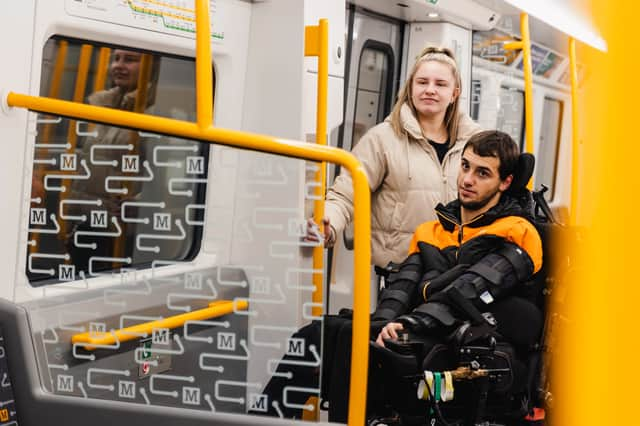Special interest groups get their first look at new Metro trains


Nexus has held a series of visits for special interest groups to experience the new Metro trains - and see how their feedback has shaped the final design.
The groups, including people with visual and hearing impairments, physical and learning disabilities, and special interest groups like cyclists, were all invited to familiarisation days to see the range of accessibility features in action - including an automatic sliding step at each set of doors and increased space for wheelchairs.
Advertisement
Hide AdAdvertisement
Hide AdStadler, the train manufacturer, are building a total of 46 new Metro trains for Nexus, the Metro operator.
Nexus involved 23,000 customers in the design of the trains including people with a range of disabilities to make sure the £362m new fleet improves accessibility and transforms the journey experience for everyone, a consultation and design process that has already won a prize for innovation from the Global Light Rail Awards.
The special interest groups were the first customers to sample the new Metro trains ahead of the first ones entering service next year.
Guided tours were provided by experts from the Metro fleet project team at the Nexus Learning Centre in South Shields. They showed visitors the on-board accessibility aids, answered questions, and took on points of feedback.
Advertisement
Hide AdAdvertisement
Hide AdPeter Bennetts, 68, of South Shields, is registered blind and is a regular Metro customer. He said: “These new trains bring huge improvements for someone like me. The special lights, the audio-visual technology, the way the doors work, and the fact you can press a button to speak directly to the driver in an emergency are all things which seem to me to be extremely positive.”
Matthew Hunter, 25, of Cramlington, who has learning disabilities, said: “These new trains are more futuristic. You can tell that the design is more advanced, and that more things have been considered around accessibility and capacity, with wider aisles.
The fleet will enter service in phases over the next two years. They have already been praised by current drivers on the system.
The new trains will also include modern features such as linear seating, charging points, air conditioning as well as delivering a step-change in accessibility.
